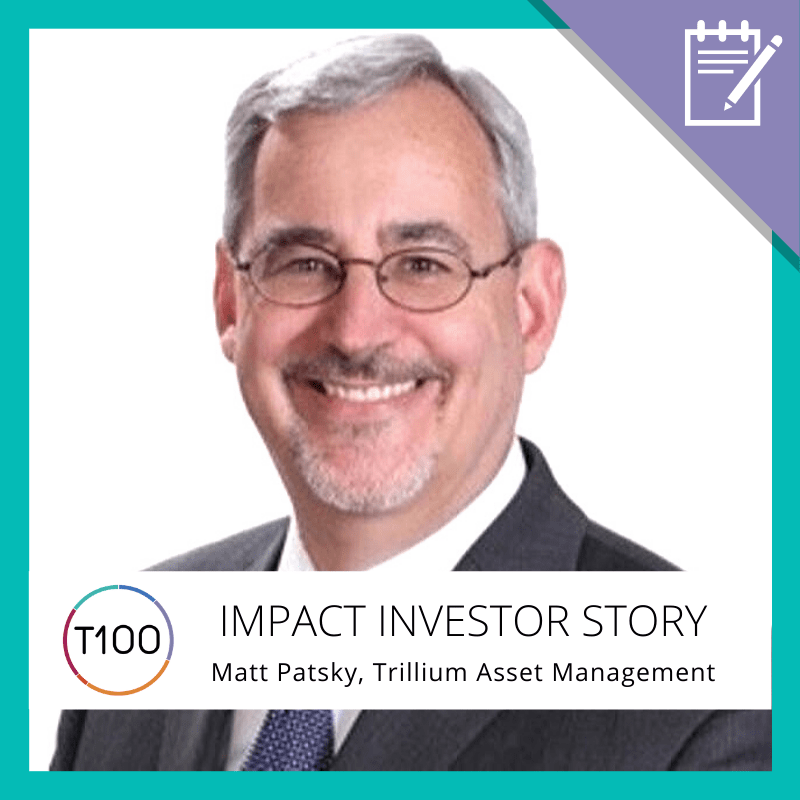Matt Patsky
CEO, Trillium Asset Management
Matt Patsky is something of an impact investing prodigy: he got interested in investing for positive social and environmental impact in 1974, when he was 11 and looking for a place to invest his earnings from mowing lawns and shoveling snow. That history made him a natural for membership in Toniic’s 100% Impact Network.
Now CEO of Boston-based Trillium Asset Management, Patsky seeks catalytic impact investments for both personal and client funds. He and his husband are primarily interested in addressing climate change and diversity issues broadly including LGBTQ equality. Trillium is focused on poverty alleviation domestically and around the world, which calls for deploying philanthropic and marketreturn capital and everything in between, Patsky says.
GETTING COMFORTABLE WITH THE CAPITAL SPECTRUM
Like many Toniic members, Patsky believes achieving real impact requires investing with a spectrum of capital and appropriate return expectations, as he explains in Toniic’s T100: Powered Ascent report.
“One of the big challenges we have with the movement of dollars is this perception that you can’t get market returns,” Patsky says. “What I keep saying to people is it’s an intentionality issue. You can get market returns. However, there are opportunities that require below-market returns.
It’s not an ‘either or’, it’s actually both.
We need people to recognize and acknowledge that a spectrum of capital across different risk, return, and impact expectations is required and not feel that it’s in conflict.”
“A good example to see the interplay of philanthropy and impact investment is loan funds that are working on poverty alleviation, whether domestic or global. For example, when Root Capital is doing a note program, they will offer a certain interest rate return. One that they think they can afford to pay to borrow the money. We at Trillium then sit back and think, ‘Well, what do we need to earn?’ versus ‘What can we earn?’” Can we agree to concessionary returns in order to help the organization? In some cases, that’s incredibly catalytic, because the organization simply wouldn’t be able to function at capital market rate.
WRESTLING WITH MEASUREMENT
Patsky also has a similarly nuanced view of measuring impact. “There are some things that are easy to measure that are not necessarily that meaningful. And there are certainly some things that are incredibly meaningful that are really hard to measure,” he notes. “I’d love for everything to be able to be quantified; I’m an analyst at heart. And yet I run into it all the time where I’m like:
How do I measure the impact we had on the lives of the employee base by increasing diversity?”
It’s important to look at both the financial returns and the impact of the portfolio as a whole, he adds. “When you’re looking at it from the full scope of the spectrum of capital, some of your investments should scale financially,” Patsky says. But in other cases, “what you’re looking for is that it was catalytic in getting things off the ground. And in some cases you can be catalytic and can get a better than market financial return, and that’s beautiful.”

